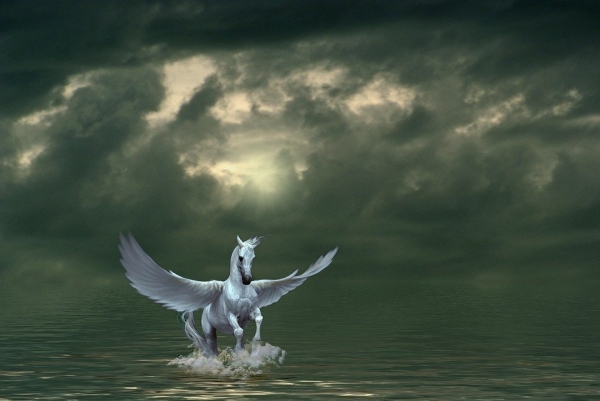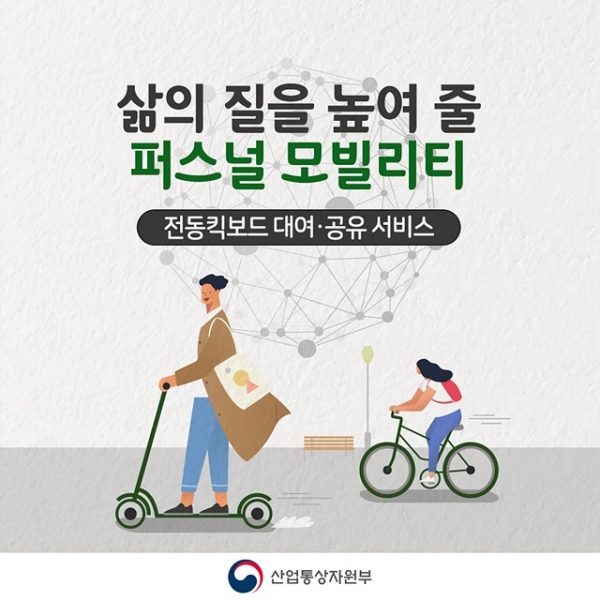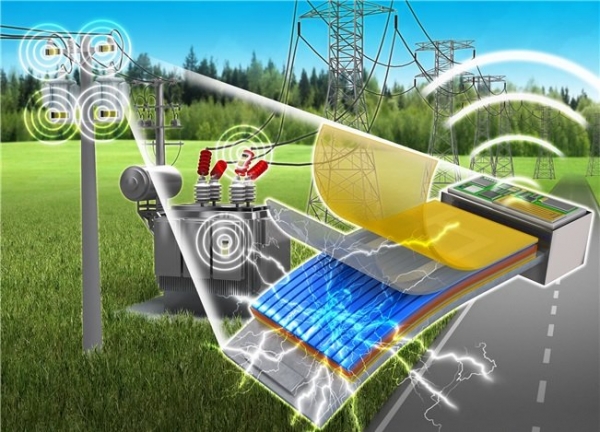이효섭 HEC Paris MBA/Sciences Po 정책학석사 복수학위 과정
[에듀인뉴스] 소프트웨어, 코딩을 넘어 인공지능까지. 빅데이터를 중심으로 한 응응 기술의 발전이 교육에 새로운 시대를 열고 있다. 에듀인뉴스는 ‘이효섭의 Tech 인사이트’를 통해 최신 기술 동향과 역사 간 접점을 찾아 새로운 기술의 개념과 응용 예시를 보다 쉽게 소개하고자 한다. 이번 연재는 어학 공부에 도움을 주기 위해 영문도 함께 제공한다.

페가수스, 슬레이프니르와 천리마
[에듀인뉴스] 약 5000년 전 인류는 역사상 가장 중요한 이종(異種) 간 파트너십을 손에 넣었다. 말(馬)을 길들여 최초의 모빌리티 혁신을 실현한 것이다. 말 덕분에 인류는 과거엔 상상조차 하지 못한 먼 거리를 이동할 수 있게 되었다.
말이 여러 문명에 널리 퍼지면서 전설적인 말에 대한 신화도 세계 각지에서 찾아볼 수 있게 되었다. 그리스인들은 날개 달린 페가수스가 ‘모든 말의 우두머리’라고 생각하였다. 페가수스는 영웅 벨레로폰이 키메라를 물리치는 데 도움을 주었다.
한편, 북구 신화에서는 최고 신 오딘을 섬기는 8개의 다리를 가진 말인 슬레이프니르에 대한 전설이 전해진다. 이와 비슷하게 중국에서 천리마(千里馬)는 우아함과 초월적인 속도를 지닌 상상의 동물이었다.
말 덕분에 인간의 이동 속도가 빨라지면서 인류의 삶도 크게 향상되었다. 흥미롭게도 그리스, 북구, 중국 신화 모두에 등장하는 전설적인 말들은 상상을 초월하는 속도를 통해 도달할 수 없는 이상을 상징해왔다.
페가수스는 예술가의 영감의 상징으로 자리잡았으며, 슬레이프니르는 기수를 망자의 땅으로 데려가는 능력이 있었다. 천리마는 고대 문헌에서 종종 천부적 재능에 대한 은유로 쓰여왔다.
말에 대한 신화를 통해 우리는 초월적인 속도를 통해 스스로의 한계를 극복하려는 인류의 잠재된 깊은 열망을 엿볼 수 있다.
자율주행 자동차를 너머
21세기 모빌리티 혁신은 ‘이동의 미래(Future of Mobility)’라고도 한다. 오늘날 모빌리티 혁신은 수천 년 전 말을 길들인 인류가 겪은 속도에 대한 인식의 변화처럼 광범위한 영향력을 지니고 있다. 우리의 눈에 쉽게 보이는 트렌드는 자율 주행 자동차와 승차 공유이지만, 모빌리티의 미래는 이들에만 국한되는 것은 아니다.

모빌리티 혁신의 세가지 주요 흐름을 알아보자.
첫째, 최근 몇 년간 다양한 라스트 마일(Last Mile) 서비스와 승차 공유 어플이 폭발적으로 증가하였다.
전기 스쿠터는 이제 여러 도시에서 짧은 거리를 이동할 때 손쉬운 선택지가 되었다. 자전거 공유, 자동차 공유 및 승차 공유는 휴대폰 어플을 통해 훨씬 쉬워졌다. 이렇게 새롭게 등장한 선택지는 우리가 여행하는 방법과 거리에 대한 인식을 바꾸었다.
둘째, 이미 전기자동차는 우리 삶의 일부가 되었고, 자율 자동차가 등장하였으며, 비행 자동차도 우리 곁에 성큼 다가왔다.
전기 자동차는 주행거리에 대한 불안감이 줄어들면서 새로운 성숙 단계에 들어섰다. 배터리 기술이 대폭 향상되어 충전 시간은 단축된 반면, 수명과 용량은 증가되었다. 자율 주행 자동차는 이제 인간 운전자보다 사고 예방에 탁월한 능력을 보여주고 있다. 이제 배터리 기술과 자동 비행 항법이 적용된 비행 자동차 또한 곧 상용화를 목전에 두고 있다.
마지막으로, 스마트 도시 교통 시스템은 이러한 추세를 통합 발전시켜 도시 내 이동을 근본적으로 변화시킬 것이다.
스마트 대중 교통이 발전함에 따라 대기오염을 크게 줄이고 교통 수단 간 원활한 환승이 가능하게 되어 사용자의 이동경로와 시간이 최적화될 것이다.

꿈의 날개와 다리
그렇다면 신화 속 페가수스의 다리와 날개라고 할 수 있는 모빌리티 혁신의 기반 기술에는 어떤 것이 있을까?
반도체와 센서 기술은 자율 주행차 구현에 필수적이다. 자율 주행 자동차의 인공지능 시스템은 새롭게 설치되는 다양한 센서가 감지하는 새로운 정보를 신속하게 처리할 수 있도록 가속화된 컴퓨팅 기능을 필요로 한다.
연결성(Connectivity) 또한 필수적인 요소이다. 원활한 교통 흐름을 위해서는 도로상의 모든 차량뿐만 아니라 내부에 장착된 부품 간 높은 수준의 통합이 요구된다. 사물인터넷(Internet of Things) 기술을 신호등 및 표지판에 적용하여 가상 네트워크와 실제 도로에서 안전하고 안정적인 이동을 실현할 수 있다.
전동화(電動化: Electrification)는 길거리 스쿠터와 테슬라 전기차뿐만 아니라 항공기 엔진에도 적용될 예정이다. 최신 리튬 이온 (폴리머) 배터리는 무게, 에너지 밀도 및 전력 출력면에서 다양한 이점을 제공한다.
물론 아직 현재 단계에서 전기 비행은 제트 엔진만큼 경제성이나 신뢰성을 보장하기 어렵다. 그러나 기술이 발전함에 따라 미래의 항공기는 소음과 이산화탄소 배출을 크게 줄일 수 있을 것이다.
바람처럼 빠른 변화의 속도
그리스 신화에 따르면 페가수스는 메두사와 포세이돈 사이에서 태어났다고 한다. 끔찍한 괴물 메두사의 피에서 그토록 아름다운 생물이 태어난 것이다.
한편, 페가수스를 길들인 유일한 사람인 벨레로폰은 키메라를 이기고 나서 곧 오만해졌다. 이에 격노한 제우스는 등에를 보내 페가수스를 물게 했고, 결국 벨레로폰은 땅에 떨어져 장님이 되었다고 한다.
마찬가지로 모빌리티 혁신이 가져올 미래에는 다양한 위험이 도사리고 있다. 승차 공유 서비스는 전 세계적으로 큰 논란을 불러일으켰다. 항공 여행을 통해 연결된 세계는 전례 없는 규모의 전염병을 앓게 되었다. 리튬 이온 배터리 공장은 기존 휘발유 자동차보다 훨씬 더 큰 환경오염을 초래할 수 있다.
혁신은 파괴적인 잠재력을 지니고 있다. 오스트리아 경제학자 조셉 슘페터는 창조적 파괴의 돌풍이 오래된 경제 구조를 파괴하여 새로운 구조를 만드는 과정이라고 했다.
이제 모빌리티 혁신은 강력한 변화의 바람을 타고 우리의 미래에 큰 영향력을 발휘하고 있다. 전설 속에 등장하는 페가수스가 인류에게 이상적인 미래에 대한 영감을 준 것처럼 우리는 새로운 이동 방법을 계속 상상할 것이다.
페가수스, 슬레이프니르 및 천리마는 길들이는 것이 불가능했다고 하지만, 우리는 모빌리티 혁신의 날개와 다리를 잘 제어하여 이 빠른 말의 등에서 떨어지지 않도록 주의해야 할 것이다.
관련 동영상
Pegasus: The Winged Stallion - Greek Mythology Explained (https://www.youtube.com/watch?v=PioFjNN5QoI)
McKinsey, What's the future of urban mobility? (https://www.youtube.com/watch?v=eiv3oJlP5wU)
Future of Mobility and Pegasus
Pegasus, Sleipnir, and Qianlima
Around 5,000 years ago, mankind created the most important partnership between species. The domestication of the horse was the first revolution in mobility, allowing humans to travel to distances only dreamed of before. As horses became more familiar in civilization, stories about superb, mythical equines also developed around the world. Greeks imagined the winged Pegasus, an idealized ‘King of all horses,’ that helped the hero Bellerophon defeat the creature Chimera. Meanwhile, the Norse talked about Sleipnir, a horse with 8 legs that served their supreme god Odin. In China, Qianlima (千里馬) represented a similar ideal of unattainable elegance and speed.
As our speed improved with horses, so did our lives. An intriguing commonality among the three mythical horses is that they all represented an ideal manifested through inconceivable speed. The Pegasus is a symbol of inspiration; the Sleipnir carries the rider to the land of the dead; Qianlima is often used as a metaphor for heavenly talent. All three was near impossible to tame, perhaps representing our deep desire to breakthrough our own limitations through speed and mobility.
Beyond Self-driving Cars
The mobility revolution of the 21 century is also referred to as the ‘Future of Mobility.’ Its broad scope and impact are perhaps no less than how horses have shaped our idea of speed thousands of years ago. While the most immediate trends we easily observe are self-driving cars and ride sharing, the Future of Mobility is not limited to them. Let’s look at three distinct trends in this realm.
First, in recent years, we have seen an explosion of various last mile services and shared mobility applications.
Electric scooters have become a staple option for traveling a few blocks in many cities. Bikesharing, carsharing, and ridesharing have become much easier through our phones. These new options have changed our way of traveling around our neighborhood as well as our perception of distance.
Second, electric cars are here today, autonomous cars are almost here, and flying cars aren’t so far ahead either.
Electric powered cars have entered a new stage of maturity, as range anxiety diminished among customers. Battery technology has improved dramatically, reducing recharge time while expanding longevity and capacity. Self-driving cars are better at preventing accidents than human drivers. Flying cars are now within reach, capitalizing advanced battery technologies and auto-flight navigation.
Finally, smart city transport systems will evolve these prevailing trends and incorporate them into the urban lifestyle.
As public transportation evolves, it will significantly decrease pollution and provide seamless transition among traffic means, optimizing travel experience for users.
The Wings and Legs of our Dreams
Now, let’s look at the technologies behind the mobility revolution. They are the wings and legs of our mythical horses of the future.
Semiconductors and sensor technology play an integral part of realizing autonomous vehicles. Artificial Intelligence in self-driving cars will require accelerated computing capabilities as new sensors create new streams of information to be dealt with.
Connectivity is also an essential technology element. A seamless traffic flow will require a high level of integration among all moving things on the road, as well as things inside them. IoT (Internet of Things) needs to be applied to traffic lights and signs to make ensure safe and reliable navigation in the network, both physical and virtual.
Electrification has taken wing from street scooters to Tesla and finally aircraft engines. Modern lithium-ion (polymer) batteries enjoy advantages in weight, energy density and power output. As of now, electric flight is not as economic or reliable as jet engines. However, as technology progresses, the aircraft of the future will have less noise and CO2emission.
Riding fast into the Unknown on the Winds of Change
According to Greek mythology, Pegasus was born between Medusa and Poseidon. The hideous Gorgon gave birth to the majestic creature at her gruesome death. As the only man who tamed Pegasus, Bellerophon quickly became arrogant after his victory over the Chimera. This hubris angered Zeus who sent a gadfly to sting the horse, making his rider fall to the earth and lose his eyesight. The future of our mobility is not without its risks. Ridesharing services have stirred up controversy all over the world. A connected world through air travel has shaped the conditions for epidemics of unprecedented scale. Li-ion battery factories may devastate the environment even more than gasoline cars.
Innovation can be very disruptive. The Austrian economist Joseph Schumpeter wrote that the gale of creative destruction is a process that destroys old economic structures to create new ones. Now, the future of our mobility rides on powerful winds of change. As legendary horses have inspired mankind to dream of an ideal future, we will continue to imagine brand new ways to move. However, while Pegasus, Sleipnir, and Qianlima were all nearly impossible to tame, we need to figure out a way to harness their wings and legs, lest we fall from their backs.
Also Watch
Pegasus: The Winged Stallion - Greek Mythology Explained (https://www.youtube.com/watch?v=PioFjNN5QoI)
McKinsey, What's the future of urban mobility? (https://www.youtube.com/watch?v=eiv3oJlP5wU)

이효섭 HEC Paris MBA/Sciences Po 정책학석사(Digital, New Technology and Public Policy) 복수학위 과정=고려대 법학과/경영학과를 졸업한 이효섭씨는 전 국방부 국제정책관실 통역장교, 전 ㈜한국항공우주산업 KF-X 및 APT 사업 계약협상 담당과장을 지냈으며 Palantir Technologies 런던사무소 근무 예정이다.
"억지로 공부해서 대학도 가고 대학원도 왔지만, 공부하는 재미를 이제서야 깨우친 아저씨입니다. 한번에 읽히는 글, 진실이 담긴 글, 겸손한 글을 쓰기 위해 노력하겠습니다."

